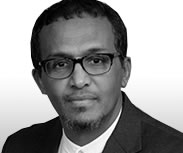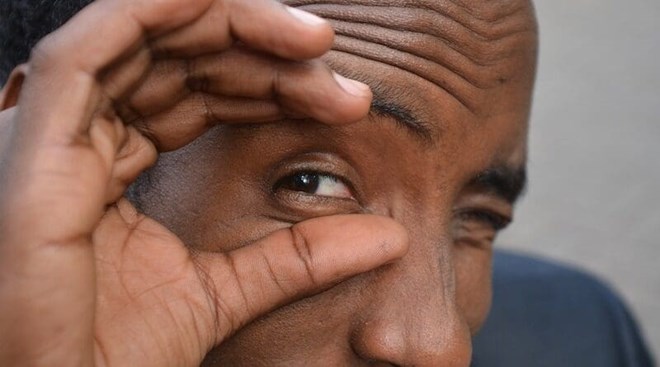
Wednesday August 6, 2025

I don’t know who coined the phrase ‘a pessimist is an experienced optimist,’ but I find some comfort in it when analyzing current and the foreseeable future of Somalia.
The fourth-year political fever is running high once again. The same failed politicians, the same overambitious dual-citizen candidates, and the same Halane loyalists who believe that political legitimacy is an endorsement that a candidate must acquire from foreign elements who operate out of the Mogadishu Green Zone are dominating hotel ballroom stages. Yet, many are naïve enough or are willfully blind enough to expect a positive outcome on May 16, 2026, the day after the incumbent President Hassan Sheikh Mohamud’s term ends.
Aside from the random tokenism offered by one side or another, none of these candidates are offering or have been working on a viable, Somali-owned reconciliation process followed by a constitutional convention.
President Mohamud, like the president before him (Farmajo), has been dangling a political carrot named one-person-one-vote at the most impracticable time. There are many factors that are likely to make such an electoral process a pie in the clouds. Chief among them is the chronic division between the central government and other key political entities such as the secessionist Somaliland, semi-secessionist Puntland, and the agnostic federal-state of Jubbaland whose militias have engaged in a deadly fight against federal special forces several months ago.
Then there are historically prominent regions such as Hiiran and Gedo with grievances of being treated underhandedly by the current brand of federalism. These enduring divisions and distrust have exposed Somalia and turned it into a handful of clan-based political entities that are nothing more than exclusive spheres of influence of various foreign powers.
Puntland is now readying itself to wage a war against the newly formed North-Eastern region (SSC-Khatumo) which is backed by the federal government over the strategic and gold-rich Sanaag. Aside from the ‘territorial integrity’ ‘clan freewill’ and ‘adherence to the constitution’ arguments made by these three actors, that region, like any other region in Somalia is not free of foreign interference and influence. That region is coveted by UAE and Israel to boost their joint defense and strategic dominance on all waters that lead to the Red Sea to encircle the Houthis.
Of course, this dysfunctional attitude gets in the way of the critical questions: How can Somalia emerge out of the current quagmire of being divided into clan territories exploited by one foreign master or another? What is the best strategy for surviving the current geopolitical storms raging in the Horn of Africa, the Red Sea, and the Middle East?
Resurgence of the Ethiopian Hegemony
In recent months, al-Shabaab recaptured many strategic towns such as Adan Yabaal, Masaajid Ali Guduud, Mahas, and Moqakori from the government forces. And this has quickly fueled the sensationalized narrative that al-Shabaab will soon be marching into Mogadishu in a Taliban-like fashion.
Over the past decades, they have proven to be a perfect pawn to advance geopolitical objectives, domestic extorsion, or for milking cash out of foreign projects- the miserably failed Ma’wisley campaign to defeat al-Shabaab being one such project.
The controversial Grand Ethiopian Renaissance Dam (GERD) has been completed, and Ethiopia is set to open the mega dam in September in a total disregard to the existential concerns expressed by Egypt and Sudan that such project could impact flow of the Nile River. The US is apparently on Egypt and Sudan’s side of the argument. President Trump said the dam was “closing up water going to the Nile.”
Trump, who in 2020 suggested Egypt to blow-up the dam has in recent weeks claimed that the GERD was built “with United States money, largely.” Ethiopia categorically denied that claim. And when Trump doubled down and publicly repeated the same claim, an Ethiopian official said: “there is no evidence that US funded the project” and that the whole project was an Ethiopian funded.
Was Trump referring to the US endorsed dark seed money bankrolled by UAE at the time when Egypt was considered a threat to Israel? Time will tell. Today, Egypt is more important than ever. The Gaza ethnic-cleansing cannot be completed without Egypt.
Against that backdrop, Ethiopia is preparing for the worst-case-scenario- a joint attack from Egypt, Eritrea, and Sudan. So, Ethiopia is urgently reclaiming strategic areas within Somalia where Egypt, which already threatened and deployed troops and arms, could lead an attack. Ethiopia’s recent deadly attack and takeover of Dolow is part of said strategy. Likewise, al-Shabaab’s takeover of Mahas and Moqakori. Ethiopia’s al-Shabaab by proxy collaboration is nothing new.
Unlike these last two towns, the Dolow violent takeover had to be done in a way that would not create a blowback effect since President Mohamud, who is now attached at the hip with Ethiopia, has been preaching the last two years that Ethiopia was determined to annex Somalia. To affirm Somalia’s official consent, both President Mohamud and his Chief of Intelligence, Mahad Salad, had to be in Addis Ababa while Ethiopia was executing its bloody takeover of Dolow, of Gedo region.
Turkiye’s Risky Endeavor
Adan Yabal and Masaajid Ali Guduud are part of the Hirshabelle federal state where Turkiye is set to deploy some of its special forces, private military corporations along with the Somali forces that it trained to protect its “mega project” that President Mohamud boasted “it will attract billions in investment and generate many jobs.”
Turkiye is in process of building a huge spaceport for rocket launching, long-range missile testing, and space exploration. Whether al-Shabaab’s presence there is a pretext or not, Turkiye’s expert feasibility study has identified the heart of Hirshabelle with its weather stability, low population density, and a convenient access to the Indian Ocean as the ideal location.
Puntland has recently intercepted the Sea World vessel carrying an assortment of heavy and light weapons being delivered to the Turkish base in Mogadishu.
Robinhoods of the Red Sea
By their defiant sustained asymmetric tactics to engage their much stronger enemies—Israel, US, and UK—Ansarullah who are famously known as the Houthis of Yemen have exposed the military, economic, and strategic vulnerability of the world’s most powerful geostrategic coalition.
The Houthis have been disrupting the international trade flow in the Red Sea. And in early July, the Houthis sank two commercial ships carrying goods to Israel. And last Sunday, the Houthis’ military spokesperson announced that the group will immediate launch the “fourth phase” of their unilateral imposition of economic blockade on Israel until they stop the genocide they have been committing in Gaza. The Houthis said they would target all ships belonging to all companies that do business with Israel, regardless of their nationalities. This would include American ships.
All countries that “want to avoid this escalation (must) pressure the enemy to halt its aggression and lift the blockade on the Gaza Strip,” the spokesman added. Within hours, Egypt was given the green light to open the Rafah crossing and to allow limited number of trucks carrying food to go into Gaza. Of course, the Israeli forces still control Rafah which they took over more than a year ago.
Meanwhile, US, UK, UAE, Saudi Arabia, and Israel are finalizing a joint strategy to defeat the Houthis. “The CIA estimates that anti-Houthi forces number around 300,000 fighters. They are well trained and well equipped. They are ready to attack the Houthis from different directions and take the Hudaydah strategic seaport to further strangulate the Houthis economically. Should that plan materializes, the Houthis will attack said coalition’s military bases in Somalia- Berbera, Bossaso, Hafoun, and Baledogle.
At the end of every four years, incumbents unlawfully demand an extension period. Ritualistically, once the contention between the incumbent and the opposition is about to cross over into the violence zone, a deal would be made to hold the presidential election. The day after the election, men in dark suits and shiny shoes would take over the Villa Somalia. No transitional period is necessary.
In the past quarter of a century, every new team, willingly or otherwise, has maintained status quo by placing the cart before the donkey. But, for the Lords of Politics: the circus must go on.